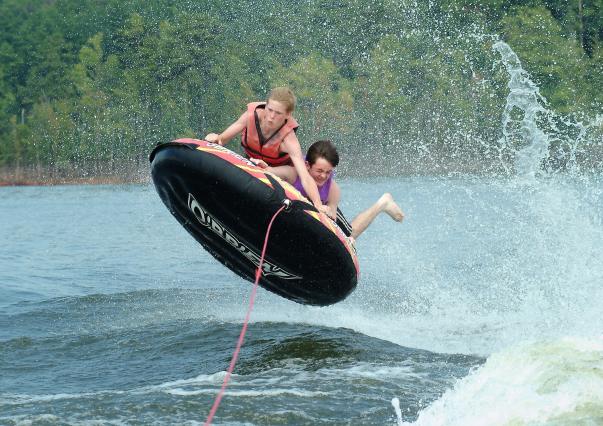Earlier this summer, a friend of mine herniated a disc in his neck after a bad fall while waterskiing. Around the same time, a Georgia woman made headlines when she was airlifted to the hospital following a tubing accident. This 31-year-old woman suffered major back injuries after her tube hit the wake of a second boat and she fell off the raft. Her story highlights how tubing and Jet Ski accidents can end in back injury.
As you say farewell to summer this Labor Day weekend, reduce your family’s risk of injury with these water sports safety tips.
- Understand boating safety precautions and rules. Even though Jet Skis and similar vehicles don’t require a license to operate, some states have started regulating their use and sharply restricting their rental availability. Generally, Jet Skis carry a much higher risk of injury than boats. Check to see if your child is old enough to operate in your state before your vacation, or if you and your family need training first.
- Wear a life vest. Even the best swimmers need a properly fitting, Coast Guard-approved life vest when hitting the lake. It’s also a great idea to wear a wet suit to reduce the impact of hitting the water after a wipeout. Boats that pull tubes should go no faster than 25 miles per hour, but even at that speed, a fall can feel like hitting concrete.
- Drive safely. Two people should be in the boat pulling the tube: one to steer and one to spot obstacles and riders who may have fallen off. Drivers should slow down when turning because of how far out a tube attached to a towline can swing. On a Jet Ski, it’s key not to ride too close to shore, or in less than two feet of water.
- Know your equipment. A lot of accidents can be avoided if you take the time to read the instructions for your vehicle or inflatable. Check weight, height and passenger limits, and, in the case of tubes, the appropriate tension before setting out. Many Jet Skis have a lanyard that attaches to the waist of the rider and shuts off the engine in the event of a fall. For tubes, experts advise riders to securely attach the towline to both the boat and the tube at their designated points.
- Learn what to do after falling off. It’s easy to fall off when tubing, but what happens afterward can be the difference between mild soreness and a serious accident. If you fall off a tube, wave to the spotter riding in the boat and stay where you are. The boat should then approach slowly and cut off the engine to avoid propeller accidents. Then grab on to the towline and wait to be pulled in.
- Watch out for wakes. Double the waves sounds like double the fun, but it can actually be very dangerous, especially when tubing. Boat drivers should slow down when crossing wakes with another vehicle to protect the people being pulled behind the boat. On a Jet Ski, it’s easy to lose control when riding in the wake of a boat or another Jet Ski.
Even the safest riders can have accidents. A wipeout can leave you with soreness or even a herniated disc. Ibuprofen or acetaminophen, rest, and a hot or cold pack may be enough for minor pains, but if the pain is severe











